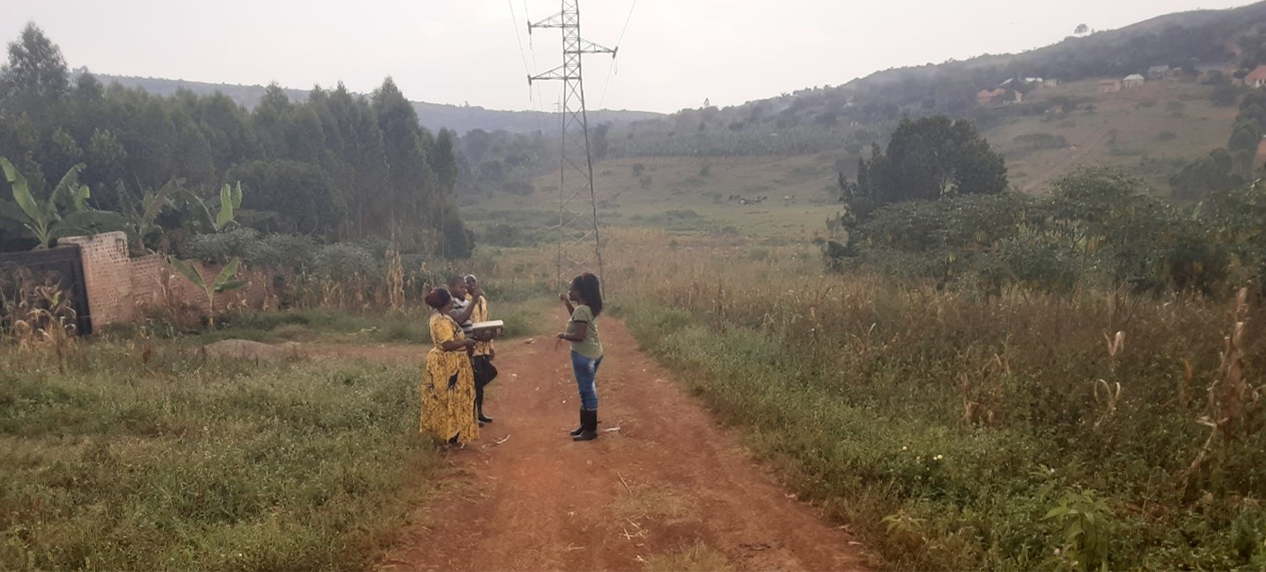Where roads and wildlife collide: a study from south-central Uganda
By Erin Adams and Lizanne Roxburgh, Conservation Planning and Science Unit

Road networks have made it much easier for people to reach places that used to be difficult to access. However, as more roads are built, the risk of vehicles colliding with wildlife increases. One of the main ways humans and animals interact on roads is through animal and vehicle collisions. Although this happens often, it is not well-studied, especially in developing countries.
In a recent study, co-authored by EWT scientists*, road networks in south-central Uganda were examined to understand how many species were affected by collisions, and whether these incidents happened more frequently at certain times of the year or in specific locations.
The scientists studied three stretches of road, each 40km long, passing through three districts in south-central Uganda. These areas include two important wildlife habitats: the Kiyanja-Kaku wetland and Lake Mburo National Park. They surveyed these roads in the morning and afternoon once a month, focusing on both rainy (March – May) and dry (June – August) seasons. Their research took place from November 2019 to April 2024.
Each month, the scientists drove these routes at a steady speed of 15 km/h and stopped whenever they found roadkill. They recorded details like GPS location, date, time, species involved, weather conditions, season, road conditions, nearby vegetation, and how far the roadkill was from the nearest natural landscape. If they found animals that were still alive, they immediately reported them to the Uganda Wildlife Authority, who responded quickly to help.
Over the study period, the scientists recorded 161 wildlife collisions involving 178 animals. The animals belonged to different groups, including 12 mammal, five reptile, two amphibian, and 32 bird families. Some areas stood out as roadkill hotspots, where most collisions happened, and these were particularly places near wetlands and farmlands.
When researchers looked at the distance between roadkill incidents and natural landscapes, reptiles were found closest to these areas, followed by birds and amphibians. Bird and mammal collisions were more common during the rainy season than the dry season. They also noticed that animals active during the day (diurnal) were involved in collisions more often than those active at night (nocturnal). Fortunately, most of the affected animals were not considered threatened according to the IUCN Red List. However, they did record some collisions involving Near Threatened and Threatened species, and even one species listed as “Data Deficient,” meaning there isn’t enough information about it to assign a Red List Status.
The scientists emphasised that speed limits should be strictly enforced in areas with a lot of wildlife, such as wetlands and farmlands. They also suggested running driver awareness campaigns, especially during the rainy season, and installing speed bumps and warning signs on roads.
The EWT has a roadkill app called “EWT Road Watch” that can be downloaded from your phone’s app store. This can be used by the general public to submit any roadkill sightings along with the GPS co-ordinates. This will help us to figure out where the hotspots are for future interventions.
*Tayebwa, G., Nyadoi, P., Turyasingura, B., Engoru, P., & Aine-Omucunguzi, A. (2025). Wildlife–Vehicle Collisions in South-Central Uganda: Implications for Biodiversity Conservation. Conservation, 5(2), 26. https://doi.org/10.3390/conservation5020026
